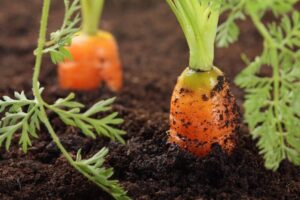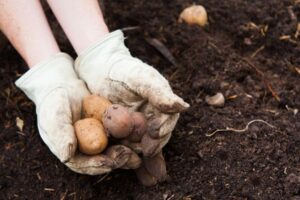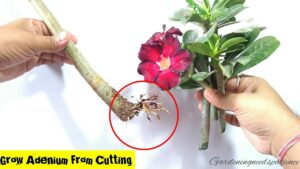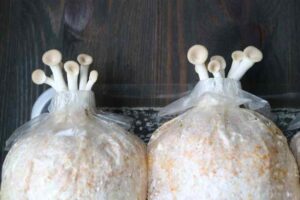
Embark on a flavorful journey as we delve into the art of planting and cultivating garlic in the heartland of Nebraska. Renowned for its rich soil and favorable climate, Nebraska offers ideal conditions for growing this aromatic bulb.
Whether you’re a seasoned gardener or a novice enthusiast, this comprehensive guide will equip you with the knowledge and techniques to cultivate a bountiful harvest of garlic.
How to Plant the Garlic in Nebraska
Step 1: Choosing the Right Garlic Variety:
The first step in your garlic-growing adventure is selecting the appropriate variety for Nebraska’s climate. Hardneck garlic, known for its robust flavor and ability to withstand cold temperatures, thrives in the state’s conditions. Some popular hardneck varieties include ‘Music,’ ‘German Red,’ and ‘Chesnok Red.’
Step 2: Preparing the Soil:
Garlic prefers well-drained, loamy soil with a pH between 6.0 and 7.0. To ensure optimal growth, amend the soil with compost or well-rotted manure to enhance its fertility and drainage capabilities. Additionally, avoid planting garlic in areas where water tends to pool, as excessive moisture can lead to bulb rot.
Step 3: Planting Garlic Cloves:
Break the garlic bulb into individual cloves, ensuring each clove has a pointed end and a basal plate. Plant the cloves pointy side up, approximately 2 inches deep and 6 inches apart, in rows spaced 12 to 18 inches apart. Firm the soil around the cloves to ensure good contact with the soil.
Step 4: Watering and Mulching:
Water the garlic bed thoroughly after planting and maintain consistent moisture throughout the growing season. Mulching the bed with straw or compost helps retain moisture, suppress weeds, and protect the garlic from harsh weather conditions.
Step 5: Fertilizing:
Garlic benefits from a balanced fertilizer application. Apply a general-purpose fertilizer, such as a 10-10-10 NPK blend, in the spring and again in the fall. Alternatively, you can use organic fertilizers like compost or fish emulsion to provide essential nutrients.
Step 6: Pest and Disease Management:
Garlic is generally resistant to pests and diseases, but it’s crucial to remain vigilant. Keep an eye out for common pests like aphids, thrips, and onion flies. Neem oil or insecticidal soap can be used to control these pests if necessary. Additionally, ensure proper drainage to prevent fungal diseases like white rot and neck rot.
Step 7: Harvesting and Storing:
Garlic is ready for harvest when the tops start to turn brown and fall over. Carefully dig up the bulbs, being cautious not to damage them. Allow the bulbs to cure in a warm, dry place for two to three weeks. Once cured, store the garlic in a cool, dark, and well-ventilated area for several months.
Common Problems and Solutions
Problem 1: White Rot
White Rot is a fungal disease that can affect garlic. It’s characterized by white, fluffy fungus around the base of the stem and causes the roots to rot.
Solution:
To avoid white rot, ensure crop rotation of at least 3-4 years. If an infection is observed, remove and destroy the infected plants immediately. Avoid planting garlic in that area for at least five years.
Problem 2: Bulb Rot
Bulb rot usually occurs due to overwatering or poor drainage, causing the garlic bulbs to rot in the ground.
Solution:
Improve the soil’s drainage by adding compost or sand. Avoid overwatering the garlic plants – the soil should be moist, but not waterlogged.
Problem 3: Garlic Rust
Garlic Rust is a fungal disease that manifests as small orange or yellow spots on the leaves.
Solution:
Crop rotation and thorough fall cleanup can help prevent this disease. If rust appears, treat the plants with a sulfur-based fungicide and avoid watering the foliage.
Problem 4: Pest Issues
Pests like onion thrips and nematodes can cause damage to garlic plants. Thrips lead to curled and distorted leaves, while nematodes can cause swollen, distorted bulbs.
Solution:
To control thrips, apply insecticidal soap or introduce predatory insects like ladybugs. For nematodes, crop rotation is crucial. Using certified disease-free planting material can also help.
Problem 5: Garlic Sprouting Too Early
Sometimes, garlic can sprout too early in warm winter weather, which can lead to weak plants and small bulbs.
Solution:
Mulch your garlic plantings with a straw to help moderate soil temperature fluctuations. Early sprouting isn’t always a problem, though, as garlic can tolerate cold well and usually continues proper development in spring.
By knowing these common problems and their solutions, you can ensure your garlic crop remains healthy and robust, providing you with a rewarding harvest.
FAQ
When is the best time to plant garlic in Nebraska?
Answer: The best time to plant garlic in Nebraska is typically late September or early October.
Is it necessary to till the soil before planting garlic in Nebraska?
Answer: Yes, it is important to till the soil to help create a loose, well-drained soil that will promote optimal garlic growth.
Conclusion
Growing garlic in Nebraska is a rewarding endeavor that yields a flavorful and versatile crop. By following these comprehensive steps, you can cultivate a thriving garlic patch that will provide you with an abundant harvest for cooking, preserving, and sharing with loved ones. Embrace the joy of garlic gardening and savor the taste of homegrown garlic in your culinary creations.







